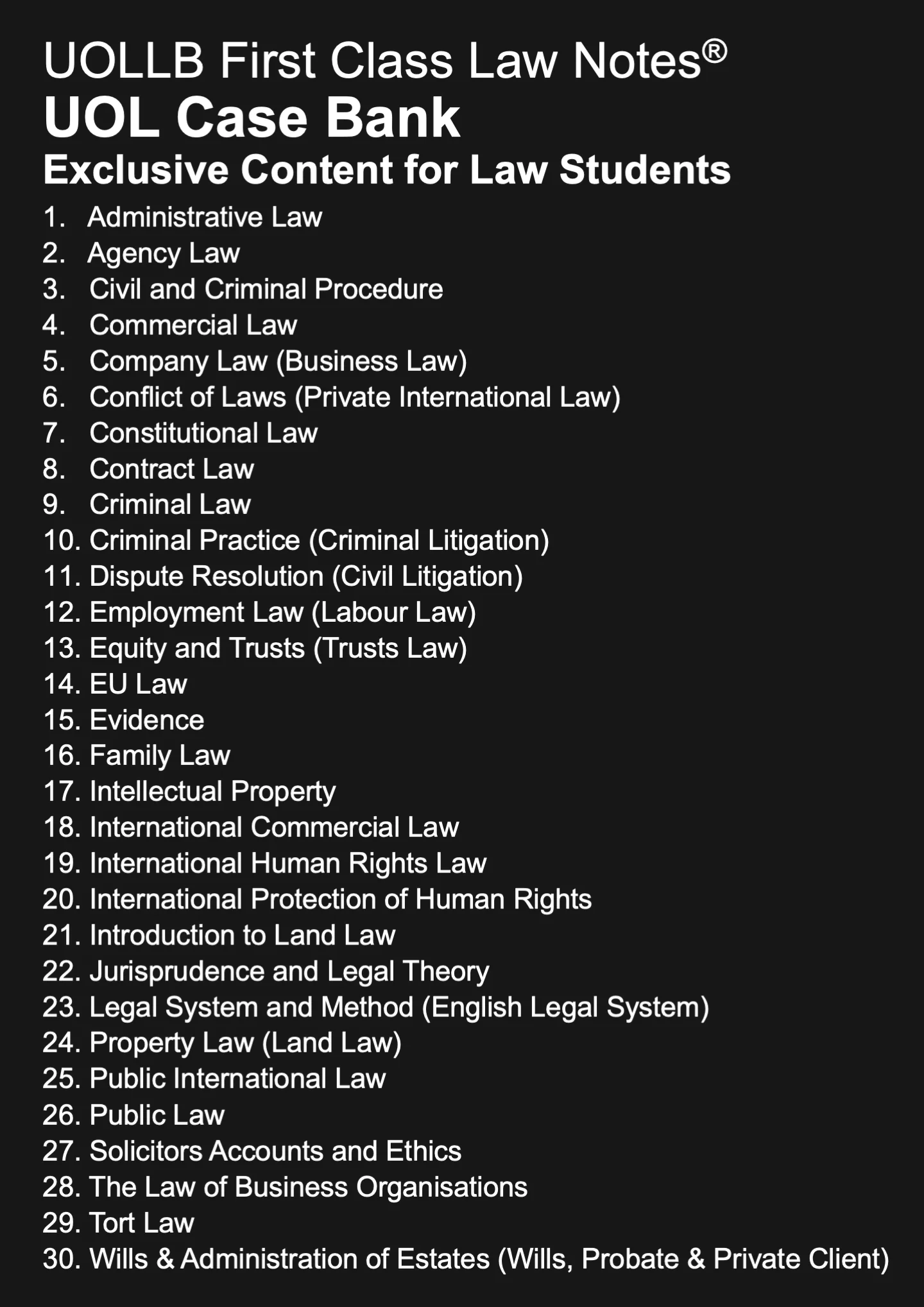Barclays v Quistclose [1970]
Share
Barclays Bank Ltd v Quistclose Investments Ltd [1970] UKHL 4 is a landmark case in English law that introduced the concept of a Quistclose trust, a unique form of proprietary interest. This case is significant in property, unjust enrichment, and trusts law, establishing principles regarding the creation and operation of Quistclose trusts.
Rolls Razor Ltd owed £484,000 to Barclays Bank Ltd and needed additional funds to pay a declared dividend. Quistclose Investments Ltd agreed to provide a loan of £209,719 8s 6d under the condition that the money would be used to pay the dividend, and it would be held in a separate account with Barclays Bank. Before the dividend was distributed, Rolls Razor Ltd entered voluntary liquidation.
The House of Lords, led by Lord Wilberforce, unanimously held that the money was held by Rolls Razor on trust for the payment of dividends. As the purpose of the trust failed due to liquidation, the money was now held on trust for Quistclose. Despite the transaction being a loan, the court acknowledged the coexistence of legal and equitable rights and emphasised that Barclays, being aware of the trust, could not retain the money against Quistclose.
The case established the Quistclose trust, describing a scenario where assets are given for a specific purpose, and if that purpose fails, the transferor can reclaim the assets. Quistclose trusts arise when the purpose of the transfer fails, leading to a resulting trust in favour of the original creditor. This ensures that the funds are not available to pay other creditors in case of insolvency. The judgment clarified that legal and equitable rights can coexist, and a party with notice of the trust cannot retain the funds against the beneficiary. The judgment applied trust principles to a unique situation, providing a legal framework for cases involving specific purposes and the failure thereof.
Lord Millett later analysed the conceptual underpinnings of Quistclose trusts, suggesting four possible answers regarding the beneficial interest, including the lender, the borrower, the ultimate purpose, and no one in the sense that the beneficial interest remains in suspense. He concluded that the lender retains the beneficial interest until the purpose is fulfilled. Lord Millett discussed the necessary intention, emphasising that a specific intention to create an express trust is not required if the court can determine the intention to confer a beneficial entitlement.
Criticisms have been raised, particularly concerning the preferential status of the lender's claim in insolvency situations without the need for registration. While Quistclose trusts remain relatively uncommon, some critics argue that they confer a proprietary claim without the need for registration, potentially favouring lenders over other unsecured creditors. Despite criticisms, no significant regulatory changes have been introduced, and the prevalence of Quistclose trusts in future cases may influence legal developments.
Rolls Razor Ltd owed £484,000 to Barclays Bank Ltd and needed additional funds to pay a declared dividend. Quistclose Investments Ltd agreed to provide a loan of £209,719 8s 6d under the condition that the money would be used to pay the dividend, and it would be held in a separate account with Barclays Bank. Before the dividend was distributed, Rolls Razor Ltd entered voluntary liquidation.
The House of Lords, led by Lord Wilberforce, unanimously held that the money was held by Rolls Razor on trust for the payment of dividends. As the purpose of the trust failed due to liquidation, the money was now held on trust for Quistclose. Despite the transaction being a loan, the court acknowledged the coexistence of legal and equitable rights and emphasised that Barclays, being aware of the trust, could not retain the money against Quistclose.
The case established the Quistclose trust, describing a scenario where assets are given for a specific purpose, and if that purpose fails, the transferor can reclaim the assets. Quistclose trusts arise when the purpose of the transfer fails, leading to a resulting trust in favour of the original creditor. This ensures that the funds are not available to pay other creditors in case of insolvency. The judgment clarified that legal and equitable rights can coexist, and a party with notice of the trust cannot retain the funds against the beneficiary. The judgment applied trust principles to a unique situation, providing a legal framework for cases involving specific purposes and the failure thereof.
Lord Millett later analysed the conceptual underpinnings of Quistclose trusts, suggesting four possible answers regarding the beneficial interest, including the lender, the borrower, the ultimate purpose, and no one in the sense that the beneficial interest remains in suspense. He concluded that the lender retains the beneficial interest until the purpose is fulfilled. Lord Millett discussed the necessary intention, emphasising that a specific intention to create an express trust is not required if the court can determine the intention to confer a beneficial entitlement.
Criticisms have been raised, particularly concerning the preferential status of the lender's claim in insolvency situations without the need for registration. While Quistclose trusts remain relatively uncommon, some critics argue that they confer a proprietary claim without the need for registration, potentially favouring lenders over other unsecured creditors. Despite criticisms, no significant regulatory changes have been introduced, and the prevalence of Quistclose trusts in future cases may influence legal developments.























































